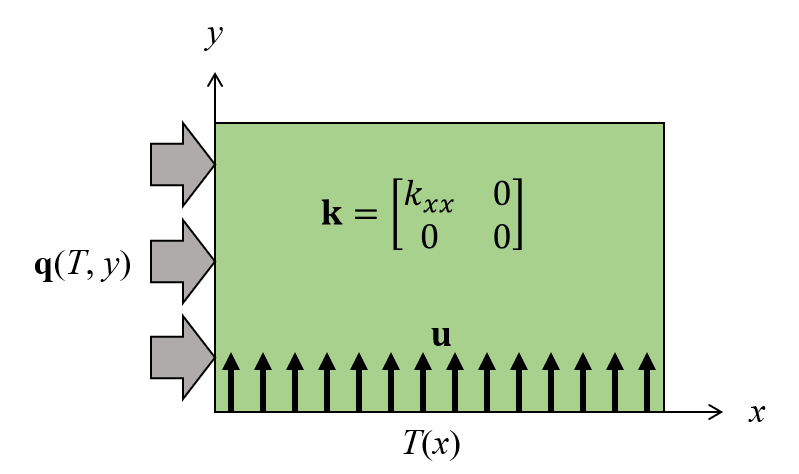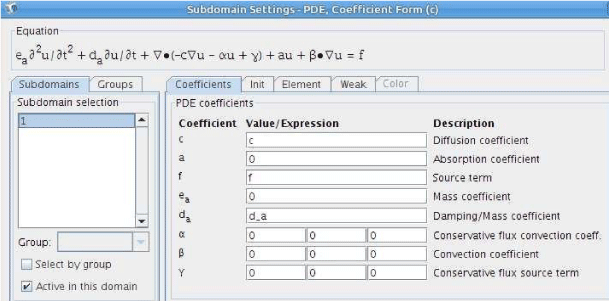

- HOW TO SELECT DISCRETIZATION SCHEME IN COMSOL 5.3 FULL
- HOW TO SELECT DISCRETIZATION SCHEME IN COMSOL 5.3 SOFTWARE
The way these assets are packaged for distribution can play a role in their reuse - an asset that is packaged simply and logically is typically easier to understand, install, and use, thereby increasing its reusability. Many reusable assets are currently available in various online catalogs and repositories, usually broken down by disciplines such as programming language (Ibiblio for Maven/Java developers, PyPI for Python developers, CPAN for Perl developers, etc.).
HOW TO SELECT DISCRETIZATION SCHEME IN COMSOL 5.3 SOFTWARE
The reuse of existing software assets such as code, architecture, libraries, and modules in current software and systems development projects can provide many benefits, including reduced costs, in time and effort, and increased reliability.
HOW TO SELECT DISCRETIZATION SCHEME IN COMSOL 5.3 FULL
The full functionality of the interface was demonstrated to model transport processes, governed by extended Nernst-Plank equation, in Class H Portland cement samples in high pressure and temperature autoclaves simulating systems that are used to store captured carbon dioxide (CO2) in geological reservoirs. Benchmark comparisons show that the developed interface can be used to predict a variety of reactive-transport processes accurately. cement) using GEMS thermodynamic database formats. The interface allows modeling media with complex chemistry (e.g. The two standalone software packages are managed from the interface that uses a non-iterative operator splitting technique to couple the transport ( COMSOL) and reaction (GEMS) processes. BurkanĪn interface was developed between COMSOL MultiphysicsTM finite element analysis software and (geo)chemical modeling platform, GEMS, for the reactive-transport modeling of (geo)chemical processes in variably saturated porous media. Overall, both software packages provided the ability to solve multiphysics phenomena accurately.Ī COMSOL-GEMS interface for modeling coupled reactive-transport geochemical processesĪzad, Vahid Jafari Li, Chang Verba, Circe Ideker, Jason H. COMSOL provided a flexible model setup whereas ANSYS required coupling incompatible elements to transfer load between electromagnetic, fluid flow, and heat transport modules. Prediction of power Loss by both models was in close agreement (5-13% variation) and the predicted temperature profiles were similar. Comparison of the results from the COMSOL model with the results from a pre-developed and validated ANSYS model ensured accuracy of the COMSOL model. Numerical models were developed to simulate temperature profiles in Newtonian fluids during continuous flow microwave heating by one way coupling electromagnetism, fluid flow, and heat transport in ANSYS 8.0 and COMSOL Multiphysics v3.4. Salvi, D Boldor, Dorin Ortego, J Aita, G M Sabliov, C M

Numerical modeling of continuous flow microwave heating: a critical comparison of COMSOL and ANSYS.

module purge module load comsol/5.3 comsol following command comsol batch -inputfile myinputfile.mph -outputfile out.mph Running a Parallel COMSOL Job comsol COMSOL can be used by starting the COMSOL GUI that allows one to compute node, the following will bring up the COMSOL interface. If you want to be able to predict these effects, you have to know your scheme.Using COMSOL Software on the Peregrine System | High-Performance Computing As far as I know, only the Crank-Nicolson scheme and Gauss-collocation methods preserve the essential dynamics, but even for those, certain features of your solution may be amplified or suppressed in an unphysical way, if your timestep is too large. The terms used to categorize the dynamics of timestepping schemes are A-, L-, and B-stability. I know of simulations where a single backward Euler step every 100 Crank-Nicolson steps made an oscillatory solution stationary. And the opposite holds: if you use a method that is too stable, turbulent, instationary flow might be turned into honey. And this goes both ways: a perfectly stable solution can be converted to an explosion if you use the wrong method with a large timestep. This question goes beyond explicit or implicit. Unfortunately, most timestepping schemes also change the dynamics of your system, which is usually subsumed under the term stability. That would be a good balance for accuracy. You want to choose your time step such that this error is balanced with a comparable error of the space discretization. There are two factors that are influenced by time step size and the choice of scheme: accuracy and stability.Īccuracy is typically measured by the "local error" or "consistency error" of the scheme.


 0 kommentar(er)
0 kommentar(er)
